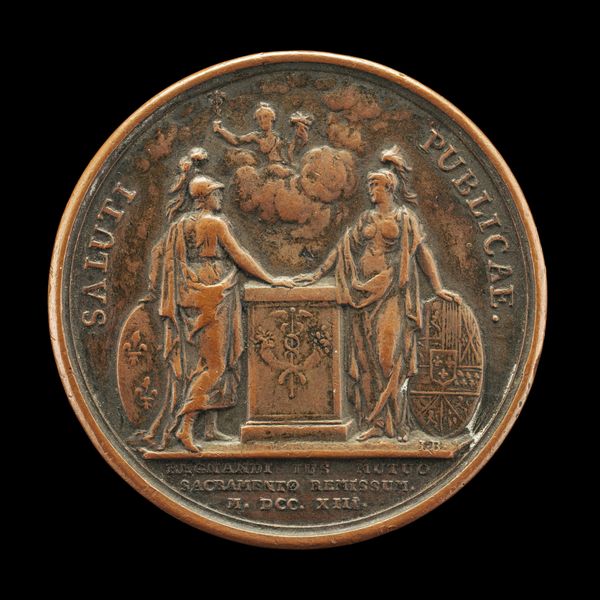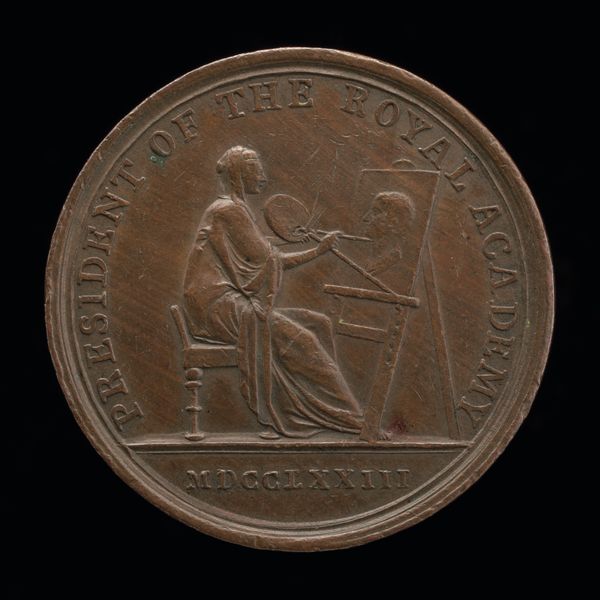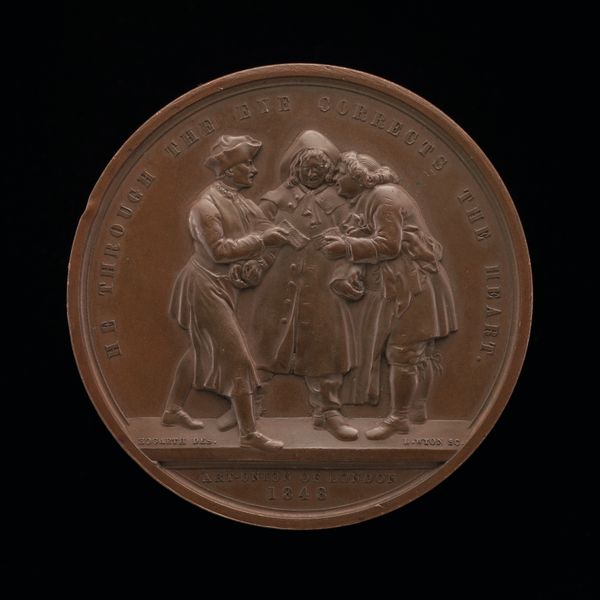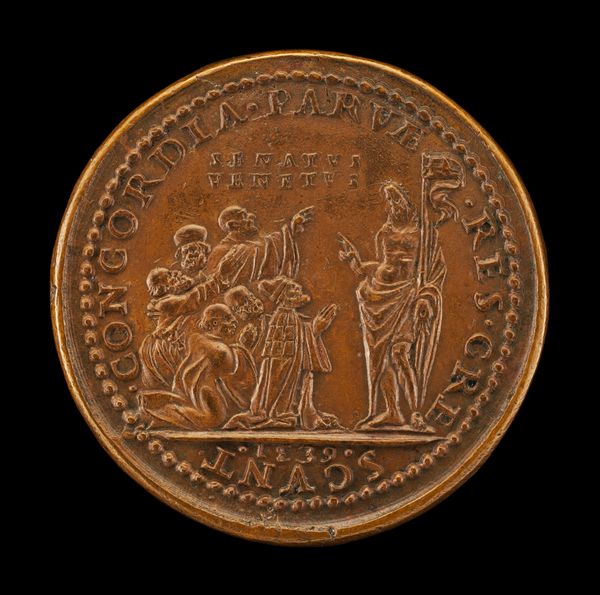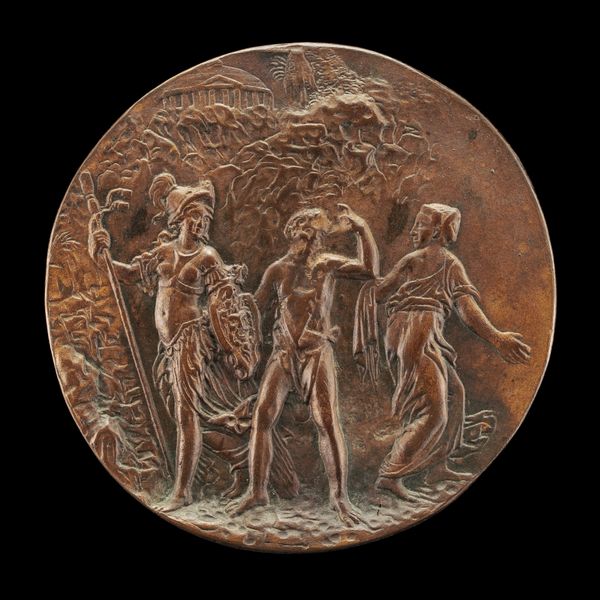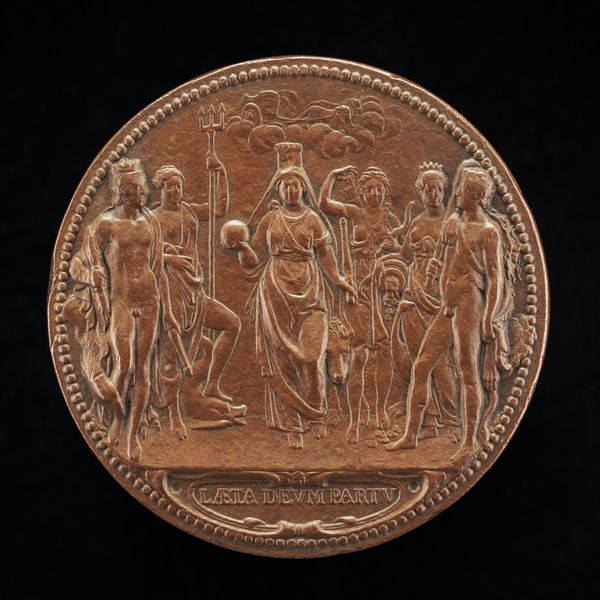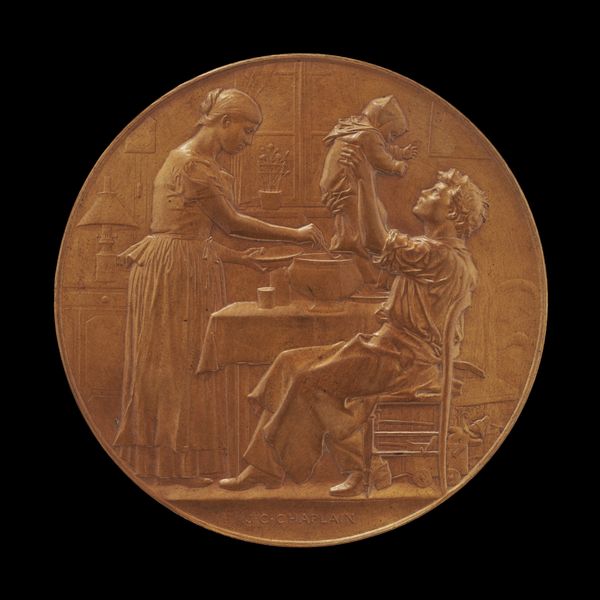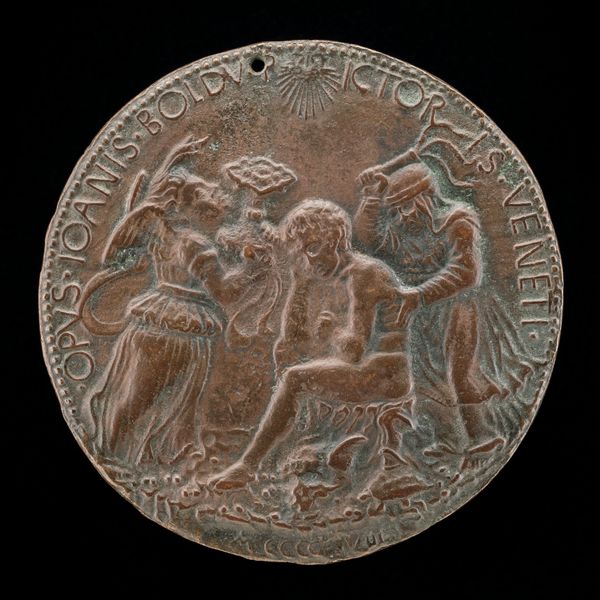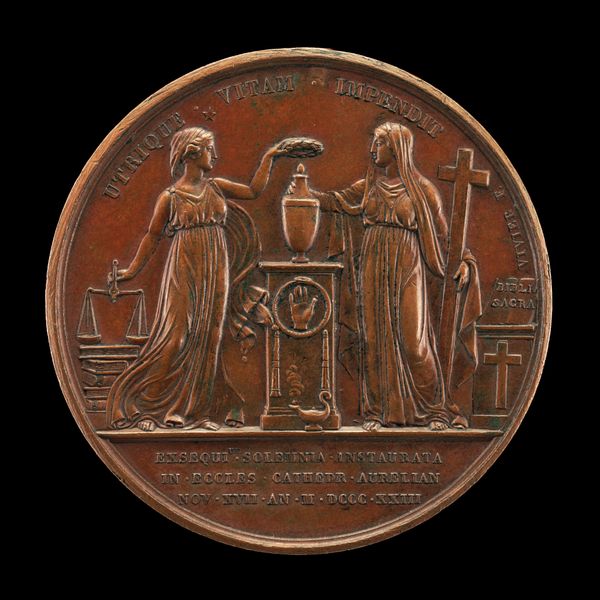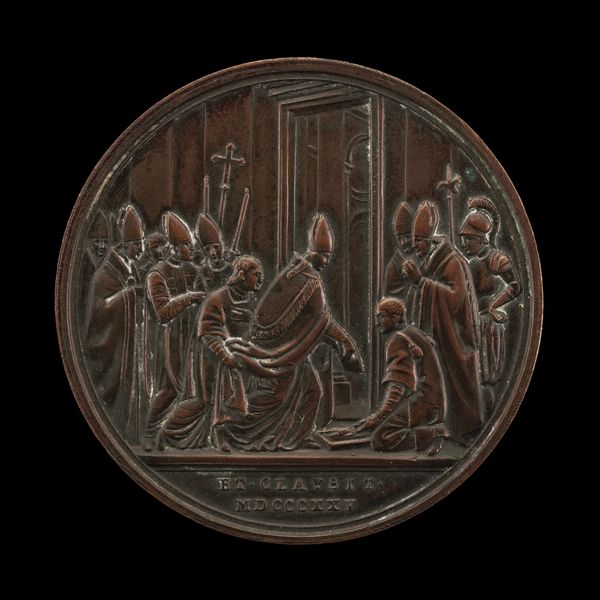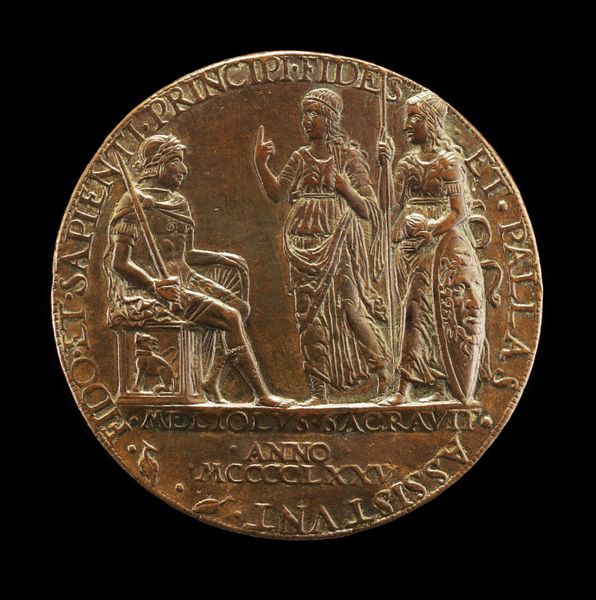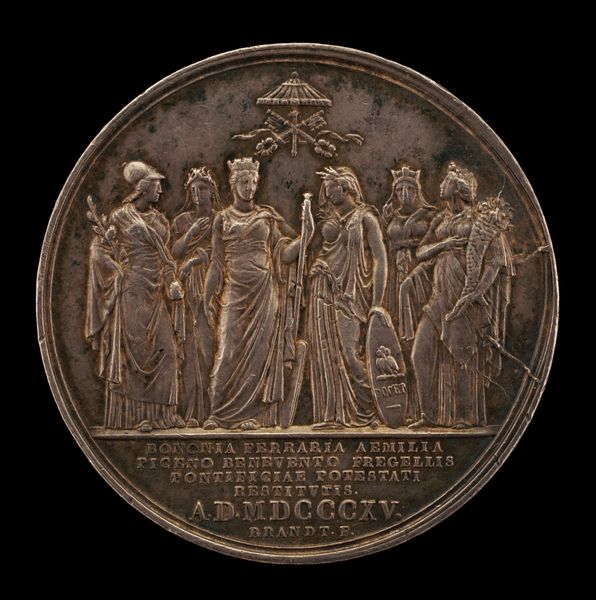![Britannia, Scotia, and Hibernia Offering Thanks for the King's Coronation by Genius [reverse] by Benedetto Pistrucci](/_next/image?url=https%3A%2F%2Fd2w8kbdekdi1gv.cloudfront.net%2FeyJidWNrZXQiOiAiYXJ0ZXJhLWltYWdlcy1idWNrZXQiLCAia2V5IjogImFydHdvcmtzLzJiMjg0YWM0LWU0ZWEtNGZlMi1iMDcwLTJmZjdhYzg2ODRkMy8yYjI4NGFjNC1lNGVhLTRmZTItYjA3MC0yZmY3YWM4Njg0ZDNfZnVsbC5qcGciLCAiZWRpdHMiOiB7InJlc2l6ZSI6IHsid2lkdGgiOiAxOTIwLCAiaGVpZ2h0IjogMTkyMCwgImZpdCI6ICJpbnNpZGUifX19&w=3840&q=75)
Britannia, Scotia, and Hibernia Offering Thanks for the King's Coronation by Genius [reverse] 1821
0:00
0:00
metal, relief, sculpture
#
portrait
#
medal
#
neoclacissism
#
allegory
#
metal
#
sculpture
#
relief
#
sculptural image
#
sculpting
#
sculpture
#
history-painting
Dimensions: overall (diameter): 3.5 cm (1 3/8 in.) gross weight: 16.92 gr (0.037 lb.) axis: 12:00
Copyright: National Gallery of Art: CC0 1.0
Editor: Here we have Benedetto Pistrucci's 1821 metal relief, "Britannia, Scotia, and Hibernia Offering Thanks for the King's Coronation by Genius". It looks very neoclassical. The scene almost feels staged, very deliberate. What story do you see embedded in this medal? Curator: It's fascinating how Pistrucci uses neoclassical imagery to legitimize and frame British power in 1821. We see the figures of Britannia, Scotia, and Hibernia presenting their respects at the coronation. Notice how they aren't just passively attending; their active "offering thanks" suggests a willing acceptance of the King's authority. Consider also that medals like this served as powerful propaganda, circulated amongst elites to reinforce the desired narrative of national unity and monarchical legitimacy. Editor: So, it’s not just about remembering the event, but also about solidifying a specific image of that event in the public eye? Curator: Precisely. Think about the Roman inscription - “PROPRIO JAM JURE ANIMO PATERNO” - which loosely translates to “by his own right and with a father’s heart." How does this text shape our interpretation of the figures depicted? It implies inherent, almost divinely ordained rule, aligning the King with an image of paternal care and rightful command. Do you think the choice of allegory, over say a straightforward portrait of the King, impacts the message? Editor: Absolutely, it elevates the coronation from a specific event to a timeless statement about kingship and national identity. That's interesting; I had viewed it only as documentation, not thinking about the messaging within the work and its distribution. Curator: It highlights how seemingly simple commemorative objects were laden with political intentions, contributing to the construction of national identity and reinforcing power structures. A medal can be so much more than simply a pretty object when viewed in this way.
Comments
No comments
Be the first to comment and join the conversation on the ultimate creative platform.
